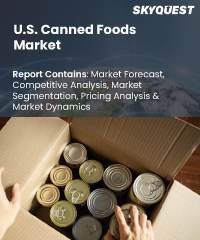
Product ID: SQMIC30I2391

Report ID:
SQMIC30I2391 |
Region:
Country |
Published Date: February, 2024
Pages:
157
|
Tables:
65 |
Figures:
75
U.S. Canned Foods Market size was valued at USD 94.1 billion in 2021 and is poised to grow from USD 95.2 billion in 2022 to USD 104.9 billion by 2030, growing at a CAGR of 1.3% in the forecast period (2023-2030).
The development of the industry is anticipated to be driven by improvements in distribution infrastructure, the resulting rise in demand for ready-to-eat food items, affordability of canned food, and shifting consumer lifestyles. The market indicates that there are big players buying smaller businesses, and these players cut prices as a result of the fierce competition. As a result of asset sales and higher fixed costs associated with automated processes, it has also been noted that the exit barriers for businesses that produce canned food are high, which has heightened competition among rivals.
An estimated USD 22.23 billion will be spent on American spending by 2026. Their consumption has increased in the United States as a result of the advantages of these foods and sustainable agricultural practices. Due to canned foods' many advantages, such as their simplicity of preparation and extended shelf life, the industry is expected to grow in the United States.
High volume and poor product margin are the fundamental features of the marketplace. With manufacturing companies sourcing their input from a wide range of suppliers, it is expected that the supplier power will be weak. With companies offering products for private customers, the retail sector is seen to be fragmented.
The U.S. FDA is required to receive reports from the businesses in the sector about the manufacturing procedures used to create canned food products. The sort of processes used in the production of canned food items, as well as the size & quality of containers used for packaging, are all governed by the authority granted by 21 CFR 108.
Our industry expert will work with you to provide you with customized data in a short amount of time.
REQUEST FREE CUSTOMIZATIONWant to customize this report? This report can be personalized according to your needs. Our analysts and industry experts will work directly with you to understand your requirements and provide you with customized data in a short amount of time. We offer $1000 worth of FREE customization at the time of purchase.

Product ID: SQMIC30I2391